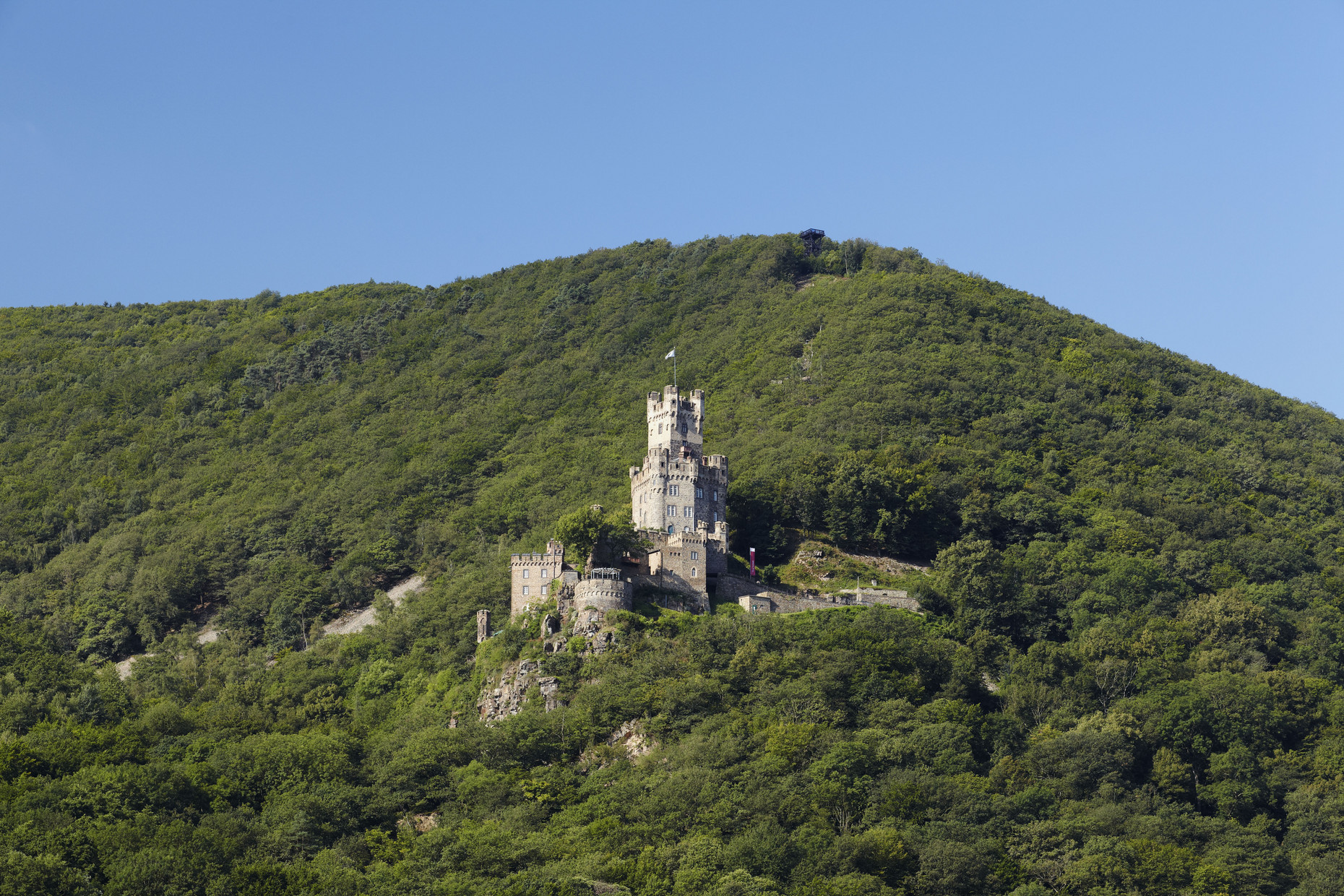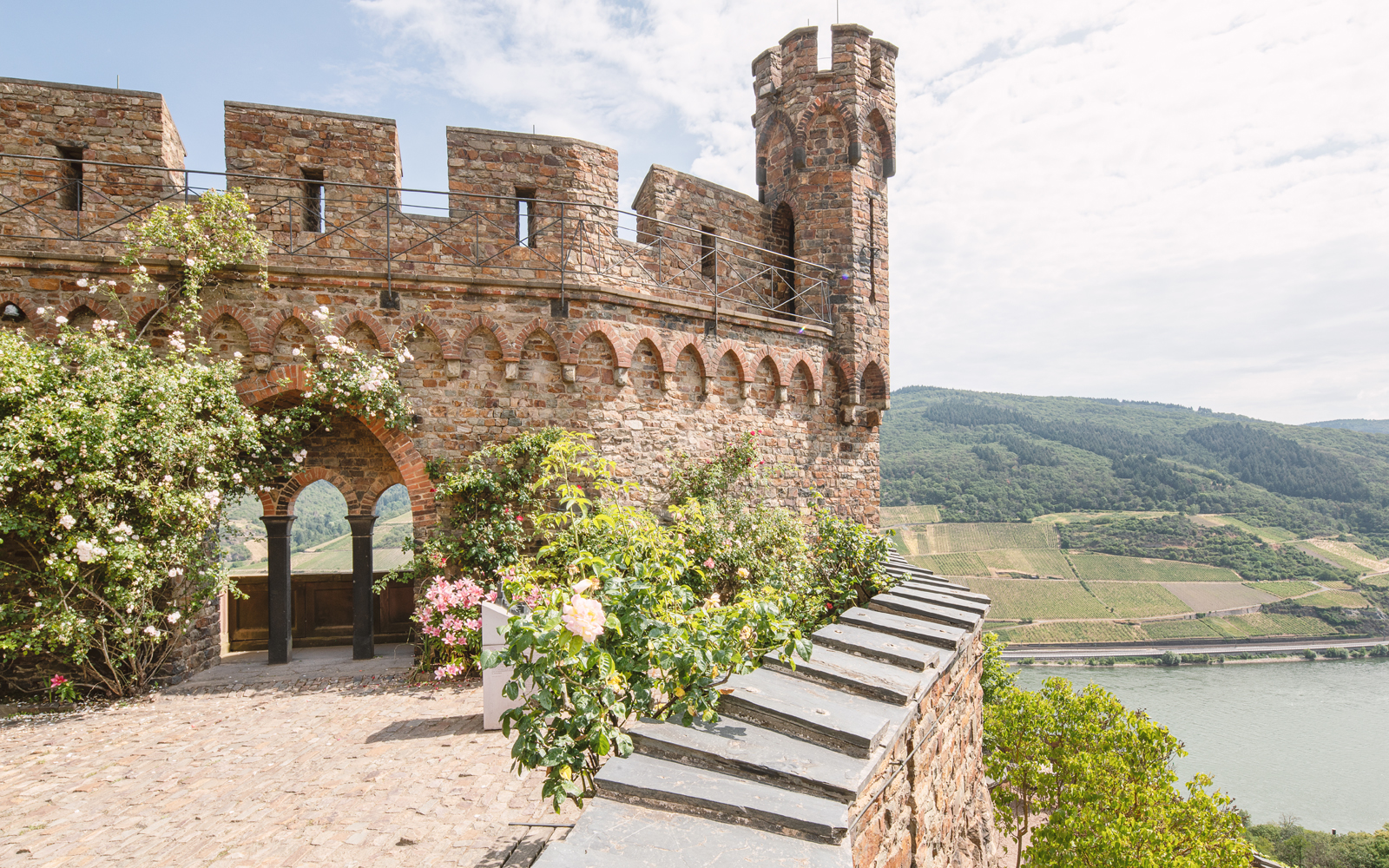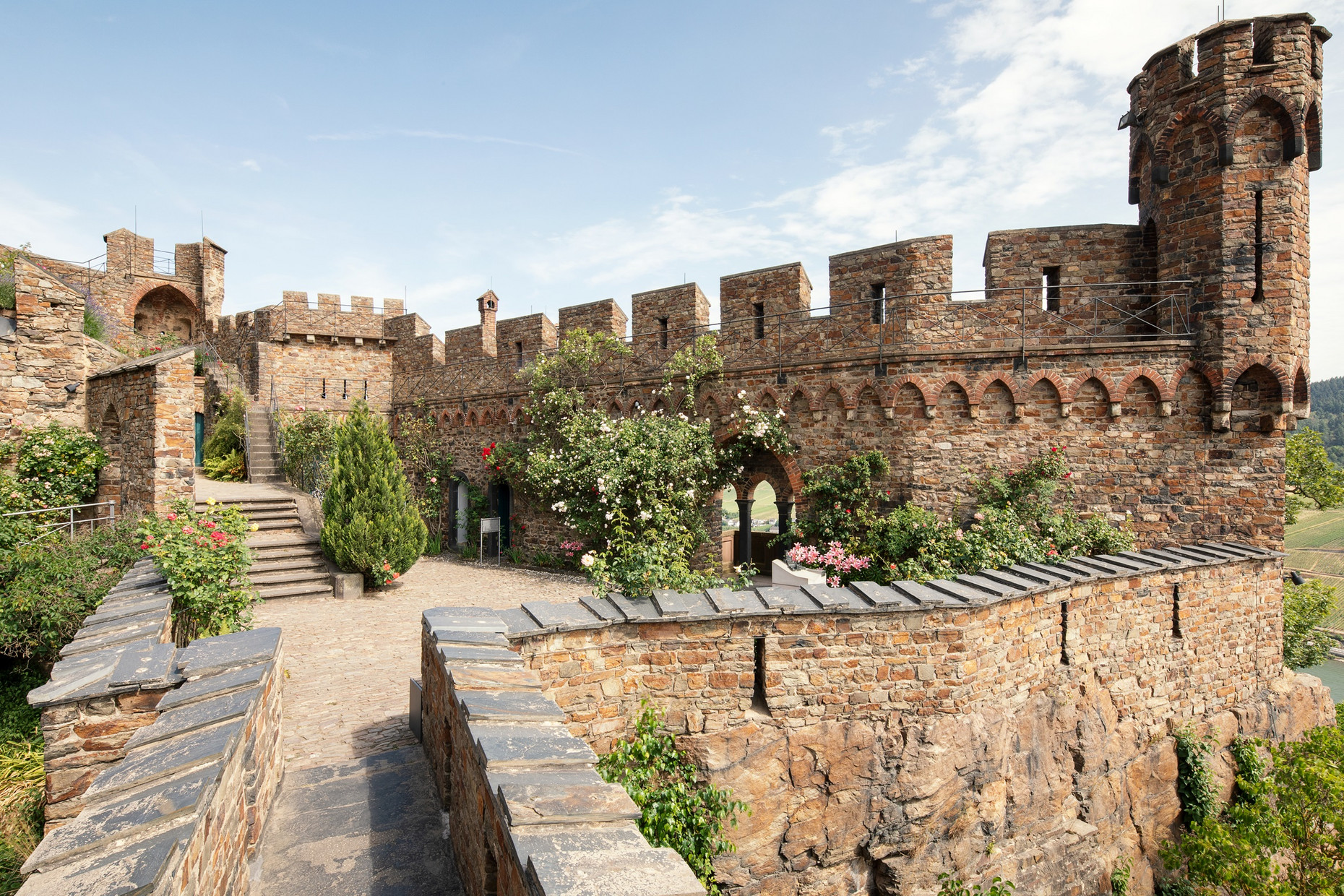Welcome to Sooneck Castle
Sooneck Castle sits high above the Rhine on the edge of the Soonwald forest in the Upper Middle Rhine Valley UNESCO World Heritage Site. Built on a high ridge, the castle is surrounded by rose bushes and looks almost as if its has grown magically from the rocks. It is pure Rhine Romanticism.
Opening hours and admission prices
Opening hours and admission prices can be found at burg-sooneck.com
Contact
Burg Sooneck
Museum & castle shop
Cora Hecher
Soonecker Str. 1
55413 Niederheimbach
Phone +49 6743 6064 (Museum)
Phone +49 6721 6377 (Administration)
sagenhaft(at)burg-sooneck.com
www.burg-sooneck.com
Sooneck Castle is a historical site of the Generaldirektion Kulturelles Erbe Rheinland-Pfalz (General Directorate for Cultural Heritage Rhineland‑Palatinate), www.gdke.rlp.de.
Regrettably, as it is a historic site, disabled access to Sooneck Castle is not possible. Thank you for your understanding.
Sooneck Castle is located in 55413 Niederheimbach, Soonecker Straße 1. Most navigation systems know.
...by car
Coming from the direction of Bingen, take the first left, then immediately left again through the development area and the vineyard to the parking lot approx. 500 meters. Coming from Bacharach, take the last turn in the village on the left (approx. 100 meters before the end of the village) and drive as described above.
...by train
Drive to Niederheimbach train station, then keep going up the river and follow the signs. The walk is about 40 minutes.
...by ship
Niederheimbach has a Bingen-Rüdesheimer pier. Then keep upriver and follow the signs. The walk is about 40 minutes.
The legendary Sooneck Castle towers high above the Rhine in the UNESCO World Heritage region of the Upper Middle Rhine Valley.
The castle’s first mention dates back to 1271: Kornelimünster Abbey sold “Sanecke“ (Sooneck) to Archbishop Werner of Mainz, who, together with the local church, became its feudal lord and owner. King Rudolf besieged and destroyed the castle in 1282.
It remained in ruins until the Archbishop of Mainz, Heinrich III, enfeoffed Johann von Waldeck with it in 1346. After 1453, a far-reaching marriage policy led to a castle union between members of the Breitbach and Waldeck families. The last fief holder was Anselm Franz von Breitbach, who received all Mainz fiefs, including Sooneck, in an inheritance division with his brother in 1660. What happened to the castle after his death is unclear. However, it was likely left to decay.
In 1834, the Prussian Prince Friedrich Wilhelm (later King Friedrich Wilhelm IV) bought the castle. While travelling along the Rhine with his brothers Wilhelm, Carl and Albrecht in 1842, he decided to
convert the well-preserved ruins into a hunting lodge for private stays. The Middle Ages served as a guideline for making the existing building habitable. “Everything very simple in the sense of a royal hunting lodge“ was the instruction given to the master builder. At Sooneck Castle, the king wanted to meet with his brothers without his court to hunt in the Soonwald forest. The realisation of this idea failed due to the revolution of 1848, family disputes in the royal family and finally the illness and death of the king. Although the castle was rebuilt by the Hohenzollern family, they rarely lived in it.
State-owned since 1918, the castle today presents itself as a romantic building surrounded by terraced roses. As Sooneck Castle was looted during World War II, it is decorated with furniture from Stolzenfels Castle. Since 1990, the first floor has been home to the Koeth-Wanscheid Foundation, which contains views of the Rhine, portraits of nobility and furniture from the 18th and 19th centuries belonging to a noble family from the Rhineland.
Snacks are available in the castle shop.
Verkehrsverein Niederheimbach
Phone +49 6743 6817
verkehrsverein(at)niederheimbach.de
www.niederheimbach.welterbe-mittelrhein.de


